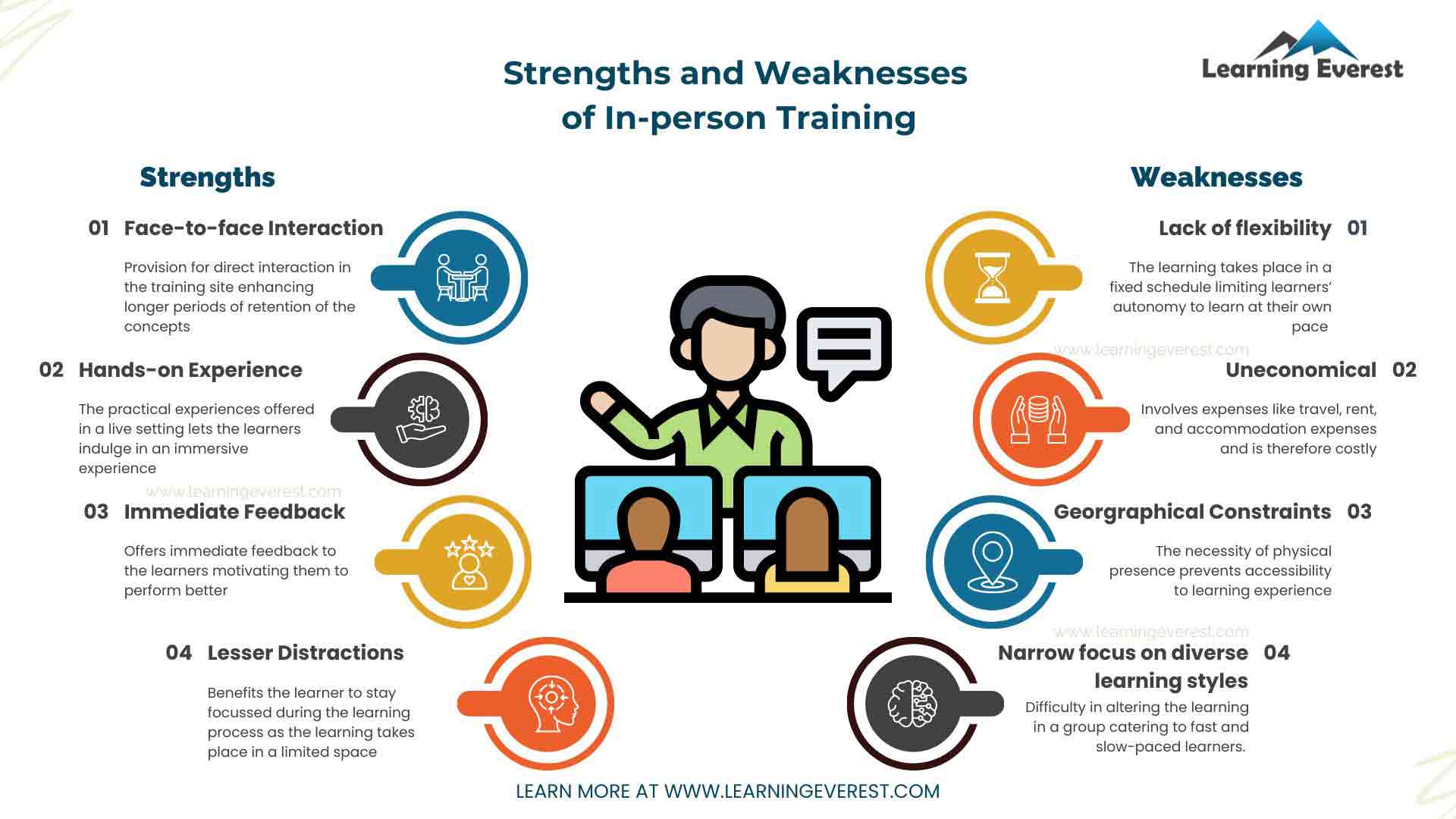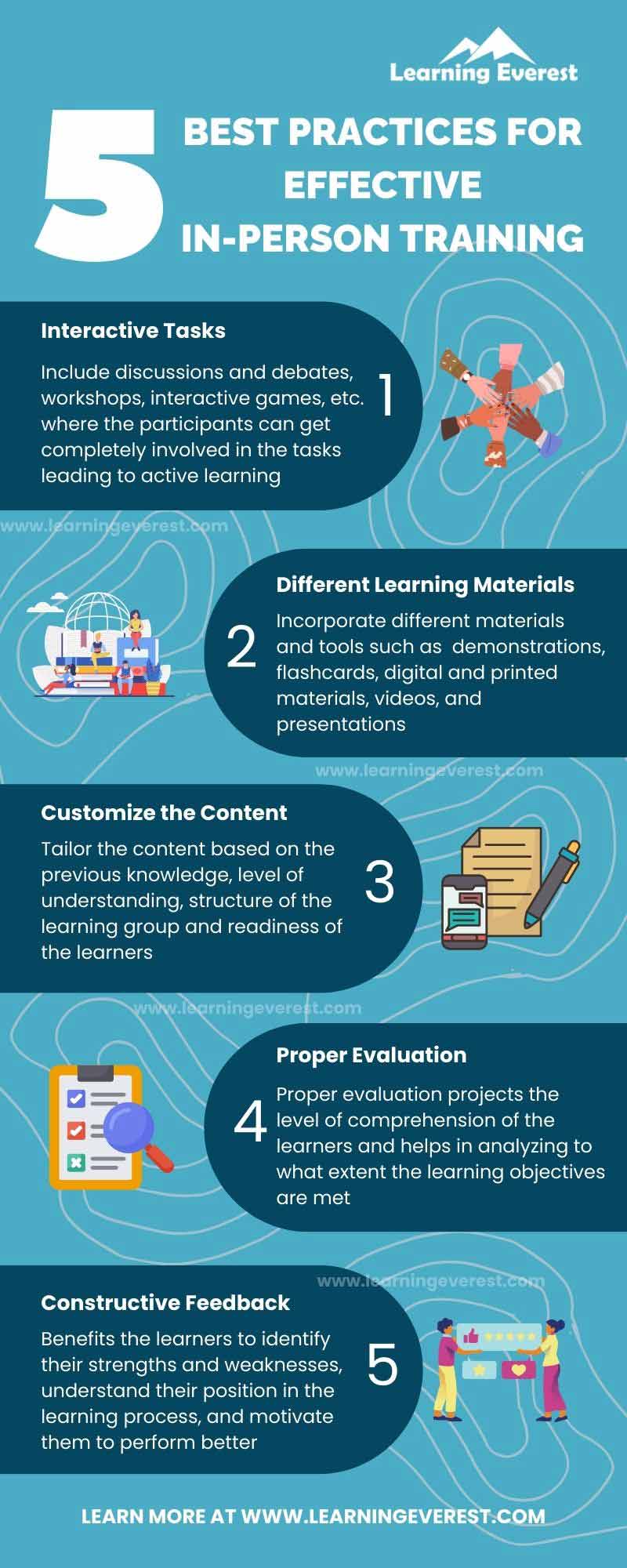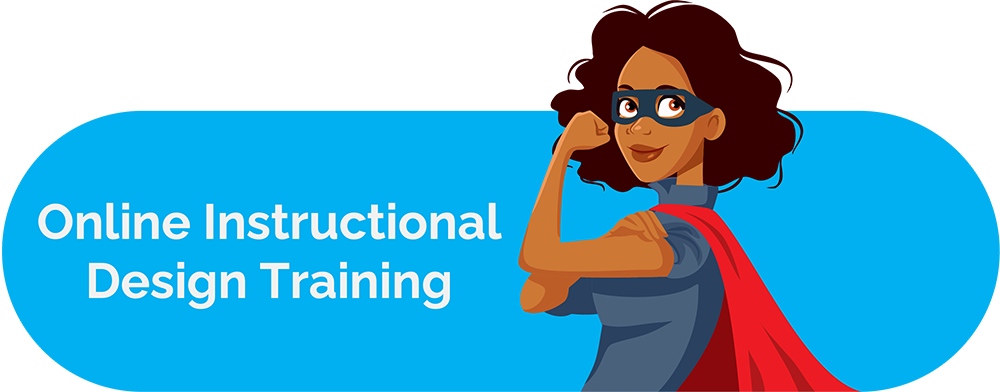In-person training is the traditional method of delivering effective training and imparting knowledge and ideas. Even with the advancements in technology and other training methods, the scope of in-person training has not declined due to its dynamic interactive environment. The following paragraphs provide insights into in-person training, its advantages and disadvantages, and five crucial strategies for creating an impactful in-person training program.
Table of Contents
Understanding In-person Training
In-person Training refers to the real-time face-to-face interaction where trainers and learners are physically present in the learning environment. The learning experience involves interaction between trainers and learners, hands-on activities, group discussions, workshops, and direct feedback. Organizations adopt in-person training to benefit their learners through active engagement and immediate feedback to enhance the learning outcomes.
In-person training differs from online training in its direct approach to delivering content in the same physical location. Compared with online training, in-person training provides better practical experiences for the learner. However, with the scope of technological integrations, simulated learning experiences, flexibility, and self-paced learning, online learning is largely preferred in the learning and development sector for effective training practices. Nevertheless, the real-time guidance and practicality of in-person training make it a relevant training method for interactive training sessions.
Analyzing the strengths and weaknesses of In-person Training
Every training method has its advantages and disadvantages. How far these advantages outweigh the disadvantages determines the effectiveness of implementing the training method. Organizations select particular training methods for delivering their instruction based on the nature of the course, duration, audience, previous knowledge of the subject matter, and the techniques to be used. In-person training is usually instructor-led with opportunities for interactions between the trainer and learners and has certain strengths and weaknesses.

Strengths and Weaknesses of In-person Training
Strengths of In-person Training
The major strengths of in-person training are:
- Face-to-face interaction: What makes in-person training different from other means of training is its provision for direct interaction in the training site. This can enhance longer periods of retention of the concepts. Furthermore, the non-verbal cues and gestures during training delivery reduce the chance of misunderstanding. Along with the interaction with trainers, it opens the pathway to network with peers.
- Hands-on experience: The practical experiences offered in a live setting are a major strength of in-person training. Learners can indulge in an immersive experience through experimentation and application. Hands-on experiences make the learning process interesting and engaging by making use of the available resources.
- Immediate feedback: Feedback is the guiding step in improving the performance and productivity of the learners involved in the learning process. Feedback acts as reinforcement in the learning process preparing an individual to increase their willingness to achieve the learning objectives. In-person training offers immediate feedback to the learners motivating them to perform better.
- Lesser distractions: In virtual means of learning, there is a probability for individuals to divert from their learning as the platform offers a wider scope of entertainment, information, and communication. In-person training benefits the learner to stay focussed during the learning process as the learning takes place in a limited space.
Weaknesses of In-person training
The weaknesses of In-person training are:
- Lack of flexibility: Since the in-person training takes place in real-time, it does not offer learners the autonomy to learn at their own pace. The learning takes place in a fixed schedule, learners are expected to be present at the allocated time.
- Uneconomical: In-person training is a costly training method as it involves expenses like travel, rent, and accommodation expenses. This factor contributes to many organizations preferring e-learning over this conventional learning method. A global online learning statistic by Guru 99 in 2024 found that “the majority of companies are shifting to e-learning. Around 42% of the institutions have experienced a rise in revenue as some costs, such as travel costs, have been significantly cut.”
- Geographical constraints: The physical presence of the learners and the trainer at a location is necessary for in-person training. This prevents accessibility for the learners to undertake the training.
- Narrow focus on diverse learning styles: Individuals with diverse learning styles are present in a group of learners. In-person training fails to alter the learning in a group catering to fast and slow-paced learners.
5 Best Practices for Effective In-person Training
In-person training can be made impactful and efficient by engaging participants and adopting steps to retain the interest of the learners throughout the session. To ensure the effectiveness of in-person training, trainers and learning and development professionals can implement five key strategies.
Interactive tasks
Rather than delivering training through one-way interaction, trainers can promote the hands-on experience of the learners by providing exciting interactive tasks. These can include discussions and debates, workshops, interactive games, etc. where the participants can get completely involved in the tasks leading to active learning. The trainers can ensure the participation of every learner in the process to analyze the progress of the learning.
Include different Learning Materials
When selecting learning aids, incorporate different materials and tools for delivering the content. This can involve demonstrations, flashcards, digital and printed materials, and interactive tools like videos, and presentations. These varied learning materials can promote visual, auditory, reading and writing, and kinesthetic learning styles (VARK) in the learning space.
Customize the content
Tailoring the content based on the previous knowledge, level of understanding, positions and roles associated with the learners, structure of the learning group and readiness of the learners can make the in-person training more engaging and effective. This includes bringing alterations to the learning materials, types of activities, and pace of delivering content along with including additional information relevant to the learning environment. Customizing content can lead to improved learning outcomes.
Proper Evaluation
Appropriate evaluation including various types of assessments, quizzes, and games can enhance the learning process. It projects the level of comprehension of the learners and helps in analyzing to what extent the learning objectives are met. An in-person training involving engaging and continuous evaluation is crucial to gather insight into the efficiency of the training program.
Constructive Feedback
Immediate feedback being the critical aspect that distinguishes in-person training from other training methods should be constructive. This helps the learners to identify their strengths and weaknesses, understand their position in the learning process, and motivate them to perform better. Constructive criticism and guidance encourage learning by building confidence in the learners.
Conclusion
The conventional method of delivering effective training, in-person training involves real-time face-to-face interaction with the physical presence of trainers and participants in the learning environment. It offers real-time guidance and hands-on experience making it a relevant training method for interactive training sessions. Like every training method, in-person training has its advantages and disadvantages. The advantages are the scope for face-to-face interaction, hands-on experience, immediate feedback, and fewer distractions.
Meanwhile, the disadvantages are lack of flexibility, expensive practice, geographical constraints, and narrow focus on diverse learning styles. To craft an impactful in-person training program, trainers can adopt five key strategies such as incorporating interactive tasks, including different learning materials, customizing the learning content based on the learning needs, adopting proper evaluation strategies, and providing constructive feedback to the learners. Trainers and learning and development professionals can include diverse strategies in their in-person training programs to avoid monotony in the learning experience and promote dynamic learning.
Infographic
Knowledge Check!
Frequently Asked Questions (FAQs)
What is in-person training?
In-person Training refers to the real-time face-to-face interaction where trainers and learners are physically present in the learning environment. The learning experience involves interaction between trainers and learners, hands-on activities, group discussions, workshops, and direct feedback.
How is in-person training different from online training?
In-person training differs from online training in its direct approach to delivering content in the same physical location. Compared with online training, in-person training provides better practical experiences for the learner. However, with the scope of technological integrations, simulated learning experiences, flexibility, and self-paced learning, online learning is largely preferred in the learning and development sector for effective training practices.
What are the advantages and disadvantages of in-person training?
The advantages are the scope for face-to-face interaction, hands-on experience, immediate feedback, and fewer distractions. Meanwhile, the disadvantages are lack of flexibility, expensive practice, geographical constraints, and narrow focus on diverse learning styles.
What are the strategies to implement an effective in-person training program?
To craft an impactful in-person training program, trainers can adopt five key strategies such as incorporating interactive tasks, including different learning materials, customizing the learning content based on the learning needs, adopting proper evaluation strategies, and providing constructive feedback to the learners.






